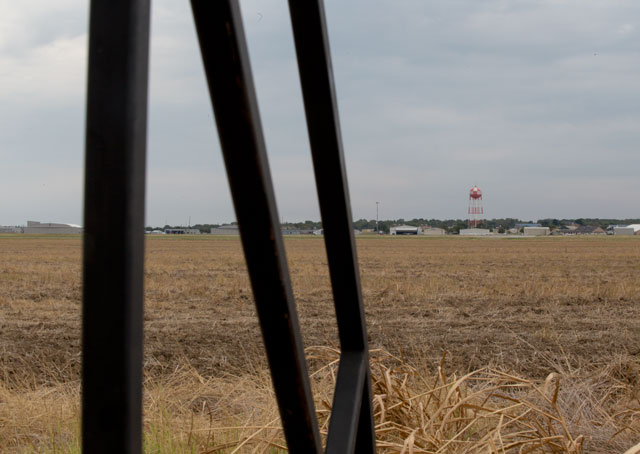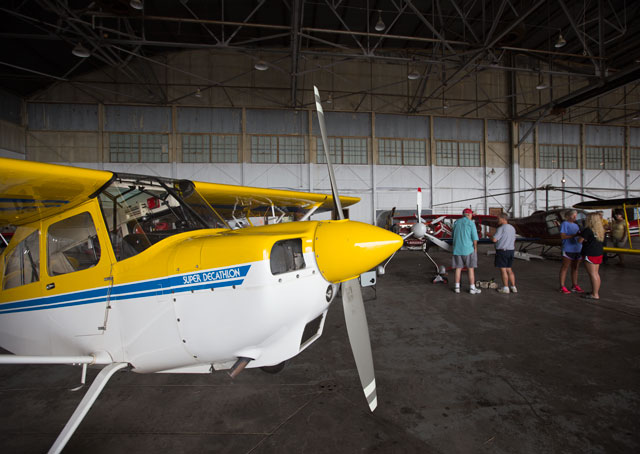
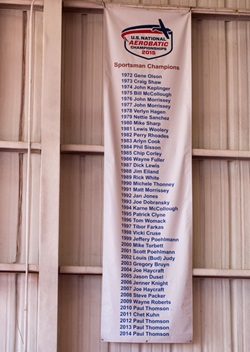
Banners hang on the wall of the hangar where each flight is briefed at the U.S. National Aerobatic Championships, listing the names of champions past. The Unlimited banner begins in 1964 with Duane Cole, among the sport’s founding fathers. The Advanced category has its own banner, starting with Gene Soucy in 1968. He would go on to win three titles in the top (Unlimited) category, in 1970, 1971, and 1972, also the year the banners for the Intermediate and Sportsman categories began, and remains a fixture on the airshow circuit. That year—1972—was also the first year that the national aerobatic championship event was held at North Texas Regional Airport/Perrin Field, even before the International Aerobatic Club was running the contest, which, among other things, selects the pilots who will represent the United States in world competitions in the Unlimited and Advanced categories.
This year there are 98 pilots registered, a bumper crop by all accounts. Tower Chief Randy Gowin (his name pronounced, auspiciously enough, GO-win) has nearly run out of room for the strips of paper set on plastic blocks that controllers use to track each flight.
“Normally, we have this many, around 40, 50 airplanes,” Gowin said, his arm moving to cut off two entire rows. “I don’t think we’ve ever had this many airplanes.”
That’s a good-news, bad-news scenario for pilots like me, who are vying to add our names to the Sportsman banner. The schedule suggests all pilots will make three competition flights, though as the sun rose on day four of the weeklong competition, Sept. 23, Sportsman pilots were still waiting to make our first. The higher categories—Unlimited, Advanced, and Intermediate—had already flown twice each. This, it seems, is partly a tradition, giving priority to the higher categories, particularly Advanced, as this year is a team selection year for the national Advanced team. (The Unlimited national team selection will be next year, since the world championships alternate.)
I’ve had a great view of those flights, spending hours on the corner of the aerobatic box, camped out with a radio and clipboard watching Rob Holland (who appears to be well on his way to a fifth national championship) and the rest of the top competitors execute brilliant (and sometimes not) sequences that can pack as many moves into a single figure as I need to make in an entire 10-figure sequence. My job here is to follow their sequences on the Aresti diagrams and report when they cross the line outside, and on which figure, and when they return to the one-kilometer-square competition box. It is an important job, one that requires the ability to read and follow a sequence, though it is not the part of competition that any of us looks forward to.
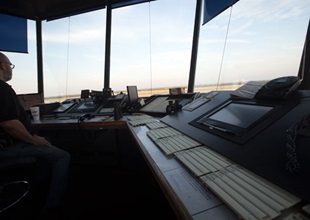
I will almost certainly get to fly today, Sportsman having started at the tail end of yesterday’s (Sept. 22) session, and at this point I have to assume that it will be the only flight I get in the national championship box. It will take most of the day, if not all of it, to fly the 28 Sportsman and six Primary pilots, since each flight requires about 15 minutes, accounting for delays as Gowin and his fellow controllers reclaim their airport to land or launch nonparticipating traffic.
This is a bit tough to take, to be honest. While I understand giving priority to the Advanced pilots and their quest to represent their country in world competition, I wonder why the rest of the top categories (Unlimited and Intermediate) have flown twice already. We all paid the same $400 entry fee (and another $100 for hangar space, $65 for the awards banquet, and I also bought a couple of shirts—all of this, by the way, on my own dime). We all worked hard to get here. We all want our name on a banner. Are the Primary and Sportsman pilots here to subsidize the rest of the competitors, and fill those slots on the judging line that is always hungry for volunteers, or are we here to also fly?
I asked Contest Director Gary DeBaun why everyone else had to fly twice before Sportsman and Primary pilots could begin. He is indefatigably cheerful and attentive, and vowed that “we’ll get it fixed,” though the available daylight and simple math (number of pilots to fly, hours in the day) seem to work against that. He said it was mainly a matter of tradition, but something he might change next year (while still giving priority to Unlimited national team selection).
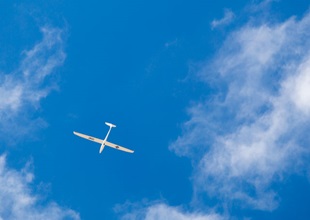
A friend of mine pointed out that no other sport gives newcomers the opportunity to compete for a national championship, and that is true enough. But this practice of pushing the Sportsman and Primary pilots, the newcomers who are the future of the sport, to the bottom of the priority list, first to be bumped in case of weather or logistical complications, is endemic. I’ve flown five regional contests, and only once did I get a chance to make a third flight (in my very first contest as a Primary pilot in 2012). I submit that the International Aerobatic Club might want to give this some thought, since most of us will start in the lower categories. If they want to have people around to man those corner boundaries and record the scores, it might be good to let us fly a little, too. Another competitor suggested that I have an incentive to move up, take on the Intermediate figures. That’s a nice idea, but it will take a few years if I ever get there. It’s not only a matter of skill development (I’d be hard-pressed to remain awake in Rob Holland’s cockpit, much less fly like he does) but a matter of cost, a financial competition that excludes those of us who cannot afford high-performance aerobatic aircraft.
So I will fly today, in my rented Super Decathlon (also on my own dime), and do my best to make it count. It may be the only chance I get to get my name on a banner before I return to the corner and watch the rest of the field get a third shot in the box.
